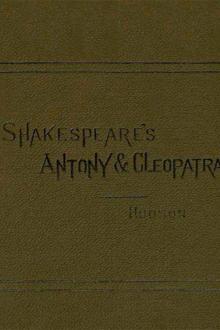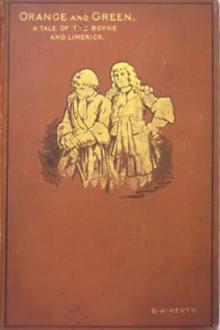Life of St. Francis of Assisi, Paul Sabatier [ebook reader with android os txt] 📗

- Author: Paul Sabatier
Book online «Life of St. Francis of Assisi, Paul Sabatier [ebook reader with android os txt] 📗». Author Paul Sabatier
/> Archiv. , t. vi. (1891), in his beautiful work Die ältesten
Redactionen der General-constitutionen des Franziskanerordens .
Cf. Speculum Morin, fo. 195b of tract. iii.
[78] The Legenda Minor of Bonaventura was also approved at
this time; it is simply an abridgment of the Legenda Major
arranged for use of the choir on the festival of St. Francis and
its octave.
[79] " Item præcipit Generale capitulum per obedientiam quod
omnes legenæ de B. Francisco olim factæ deleantur et ubi
inveniri poterant extra ordinem ipsas fratres studeant amovere,
cum illa legenda quæ facta est per Generalem sit compilata prout
ipse habuit ab ore illorum qui cum B. Francisco quasi semper
fuerunt et cuncta certitudinaliter sciverint et probata ibi sint
posita diligenter. " This precious text has been found and
published by Father Rinaldi in his preface to the text of
Celano: Seraphici viri Francisci vitæ duæ , p. xi. Wadding
seems to have known of it, at least indirectly, for he says:
" Utramque Historiam, longiorem et breviorem, obtulit
(Bonaventura) triennio post in comitiis Pisanis patribus
Ordinis, quas reverentur cum gratiarum actione , SUPRESSIS ALIIS
QUIBUSQUE LEGENDIS, ADMISERUNT." Ad ann., 1260, no. 18. Cf.
Ehrle, Zeitschrift für kath. Theol. , t. vii. (1883), p.
386.--" Communicaverat sanctus Franciscus plurima sociis suis et
fratribus antiquis, que oblivioni tradita sunt, tum quia que
scripta erant in legenda prima, nova edita a fratre. Bonaventura
deleta et destructa sunt , IPSOJUBENTE tum quia ..." Chronica
tribul. , Archiv. , t. ii., p. 256.
[80] Bon., 188-204.
[81] Bon., 218.
[82] Bernardo (Bon., 28), Egidio (Bon., 29), and Silvestro
(Bon., 30).
[83] Bon., 49.
[84] Bon., 112.
[85] Bon., 111.
[86] Vide Bon., 115; 99, etc. M. Thode has enumerated the
stories relating especially to Bonaventura: ( Franz von Assisi ,
p. 535).
[87] Manuscript I, iv., 33, of the library of the University of
Turin. It is a 4to upon parchment of the close of the fourteenth
century, 124 ff. It comprises first the biography of St. Francis
by St. Bonaventura and a legend of St. Clara, afterwards at f^o
95 the De laudibus . The text will soon be published in the
Analecta franciscana of the Franciscans of Quaracchi, near
Florence.
[88] In reading it we quickly discover that he was specially
well acquainted with the convents of the Province of Aquitania,
and noted with care everything that concerned them.
[89] Wadding, ann. 1230, no. 7. Many passages prove at least
that he accompanied Bonaventura in his travels: " Hoc enim (the
special aid of Brother Egidio) in iis quæ ad bonum animæ
pertinent devotus Generalis et Cardinalis predictus ... nos
docuit ." F^o 96a. Jamdudum ego per Theutoniæ partes et
Flandriæ cum Ministro transiens Generali. Ibid., f^o 106a.
[90] Bernard de Besse is the author of many other writings,
notably an important Calalogus Ministrorum generalium
published after the Turin manuscript by Father Ehrle
( Zeitschrift für kath. Theol. , t. vii., pp. 338-352), with a
very remarkable critical introduction (ib., pp. 323-337). Cf.
Archiv für Litt. u. Kirchg. , i., p. 145.--Bartolommeo di Pisa,
when writing his Conformities , had before him a part of his
works, f^o 148b, 2; 126a, 1; but he calls the author sometimes
Bernardus de Blesa , then again Johannes de Blesa . See also
Mark of Lisbon, t. ii., p. 212, and Hauréau, Notices et
extraits , t. vi., p. 153.
[91] " Denique primos Francisci xii. discipulos ... omnes
sanctos fuisse audirimus preter unum qui Ordinem exiens leprosus
factus laqueo vel alter Judas interiit, ne Francisco cum Christo
vel in discipulis similitudo deficeret ," f^o 96a.
* * * * *
III
DIPLOMATIC DOCUMENTS
In this category we place all the acts having a character of public authenticity, particularly those which were drawn up by the pontifical cabinet.
This source of information, where each document has its date, is precisely the one which has been most neglected up to this time.
I. DONATION OF THE VERNA
The Instrumentum donationis Montis Alvernæ , a notarial document preserved in the archives of Borgo San Sepolcro,[1] not only gives the name of the generous friend of Francis, and many picturesque details, but it fixes with precision a date all the more important because it occurs in the most obscure period of the Saint's life. It was on May 8, 1213, that Orlando dei Catani , Count of Chiusi in Casentino, gave the Verna to Brother Francis.
II. REGISTERS OF CARDINAL UGOLINI
The documents of the pontifical chancellery addressed to Cardinal Ugolini, the future Gregory IX., and those which emanate from the hand of the latter during his long journeys as apostolic legate,[2] are of first rate importance.
It would be too long to give even a simple enumeration of them. Those which mark important facts have been carefully indicated in the course of this work. It will suffice to say that by bringing together these two series of documents, and interposing the dates of the papal bulls countersigned by Ugolini, we are able to follow almost day by day this man, who was, perhaps without even excepting St. Francis, the one whose will most profoundly fashioned the Franciscan institute. We see also the pre-eminent part which the Order had from the beginning in the interest of the future pontiff, and we arrive at perfect accuracy as to the dates of his meetings with St. Francis.
III. BULLS
The pontifical bulls concerning the Franciscans were collected and published in the last century by the monk Sbaralea.[3] But from these we gain little help for the history of the origins of the Order.[4]
The following is a compendious list; the details have been given in the course of the work:
No. 1. August 18, 1218.--Bull Literæ tuæ addressed to Ugolini. The pope permits him to accept donations of landed property in behalf of women fleeing the world (Clarisses) and to declare that these monasteries are holden by the Apostolic See.
No. 2. June 11, 1219.-- Cum delecti filii. This bull, addressed in a general way to all prelates, is a sort of safe conduct for the Brothers Minor.
No. 3. December 19, 1219.-- Sacrosancta romana. Privileges conceded to the Sisters (Clarisses) of Monticelli, near Florence.
No. 4. May 29, 1220.-- Pro dilectis. The pope prays the prelates of France to give a kindly reception to the Brothers Minor.
No. 5. September 22, 1220.-- Cum secundum. Honorius III. prescribes a year of noviciate before the entry into the Order.
No. 6. December 9, 1220.-- Constitutus in præsentia. This bull concerns a priest of Constantinople who had made a vow to enter the Order. As there is question here of frater Lucas Magister fratrum Minorem de partibus Romaniæ we have here indirect testimony, all the more precious for that reason, as to the period of the establishment of the Order in the Orient.
No. 7. February 13, 1221.--New bull for the same priest.
No. 8. December 16, 1221.-- Significatum est nobis. Honorius III. recommends to the Bishop of Rimini to protect the Brothers of Penitence (Third Order).
No. 9. March 22, 1222.[5]-- Devotionis vestræ. Concession to the Franciscans, under certain conditions, to celebrate the offices in times of interdict.
No. 10. March 29, 1222.-- Ex parte Universitatis. Mission given to the Dominicans, Franciscans, and Brothers of the Troops of San Iago in Lisbon.
Nos. 11, 12, and 13.--September 19, 1222.-- Sacrosancta Romana. Privileges for the monasteries (Clarisses) of Lucca, Sienna, and Perugia.
No. 14. November 29, 1223.-- Solet annuere. Solemn approbation of the Rule, which is inserted in the bull.
No. 15. December 18, 1223.-- Fratrum Minorum. Concerns apostates from the Order.
No. 16. December 1, 1224.-- Cum illorum. Authorization given to the Brothers of Penitence to take part in the offices in times of interdict, etc.
No. 17. December 3, 1224.-- Quia populares tumultus. Concession of the portable altar.
No. 18. August 28, 1225.-- In hiis. Honorius explains to the Bishop of Paris and the Archbishop of Rheims the true meaning of the privileges accorded to the Brothers Minor.
No. 19. October 7, 1225.-- Vineae Domini. This bull contains divers authorizations in favor of the Brothers who are going to evangelize Morocco.
This list includes only those of Sbaralea's bulls which may directly or indirectly throw some light upon the life of St. Francis and his institute. Sbaralea's nomenclature is surely incomplete and should be revised when the Registers of Honorius III. shall have been published in full.[6]
FOOTNOTES:
[1] It was published by Sbaralea, Bull., t. iv., p. 156, note h.
This act was drawn up July 9, 1274, at a time when the son of
Orlando as well as the Brothers Minor desired to authenticate
Redactionen der General-constitutionen des Franziskanerordens .
Cf. Speculum Morin, fo. 195b of tract. iii.
[78] The Legenda Minor of Bonaventura was also approved at
this time; it is simply an abridgment of the Legenda Major
arranged for use of the choir on the festival of St. Francis and
its octave.
[79] " Item præcipit Generale capitulum per obedientiam quod
omnes legenæ de B. Francisco olim factæ deleantur et ubi
inveniri poterant extra ordinem ipsas fratres studeant amovere,
cum illa legenda quæ facta est per Generalem sit compilata prout
ipse habuit ab ore illorum qui cum B. Francisco quasi semper
fuerunt et cuncta certitudinaliter sciverint et probata ibi sint
posita diligenter. " This precious text has been found and
published by Father Rinaldi in his preface to the text of
Celano: Seraphici viri Francisci vitæ duæ , p. xi. Wadding
seems to have known of it, at least indirectly, for he says:
" Utramque Historiam, longiorem et breviorem, obtulit
(Bonaventura) triennio post in comitiis Pisanis patribus
Ordinis, quas reverentur cum gratiarum actione , SUPRESSIS ALIIS
QUIBUSQUE LEGENDIS, ADMISERUNT." Ad ann., 1260, no. 18. Cf.
Ehrle, Zeitschrift für kath. Theol. , t. vii. (1883), p.
386.--" Communicaverat sanctus Franciscus plurima sociis suis et
fratribus antiquis, que oblivioni tradita sunt, tum quia que
scripta erant in legenda prima, nova edita a fratre. Bonaventura
deleta et destructa sunt , IPSOJUBENTE tum quia ..." Chronica
tribul. , Archiv. , t. ii., p. 256.
[80] Bon., 188-204.
[81] Bon., 218.
[82] Bernardo (Bon., 28), Egidio (Bon., 29), and Silvestro
(Bon., 30).
[83] Bon., 49.
[84] Bon., 112.
[85] Bon., 111.
[86] Vide Bon., 115; 99, etc. M. Thode has enumerated the
stories relating especially to Bonaventura: ( Franz von Assisi ,
p. 535).
[87] Manuscript I, iv., 33, of the library of the University of
Turin. It is a 4to upon parchment of the close of the fourteenth
century, 124 ff. It comprises first the biography of St. Francis
by St. Bonaventura and a legend of St. Clara, afterwards at f^o
95 the De laudibus . The text will soon be published in the
Analecta franciscana of the Franciscans of Quaracchi, near
Florence.
[88] In reading it we quickly discover that he was specially
well acquainted with the convents of the Province of Aquitania,
and noted with care everything that concerned them.
[89] Wadding, ann. 1230, no. 7. Many passages prove at least
that he accompanied Bonaventura in his travels: " Hoc enim (the
special aid of Brother Egidio) in iis quæ ad bonum animæ
pertinent devotus Generalis et Cardinalis predictus ... nos
docuit ." F^o 96a. Jamdudum ego per Theutoniæ partes et
Flandriæ cum Ministro transiens Generali. Ibid., f^o 106a.
[90] Bernard de Besse is the author of many other writings,
notably an important Calalogus Ministrorum generalium
published after the Turin manuscript by Father Ehrle
( Zeitschrift für kath. Theol. , t. vii., pp. 338-352), with a
very remarkable critical introduction (ib., pp. 323-337). Cf.
Archiv für Litt. u. Kirchg. , i., p. 145.--Bartolommeo di Pisa,
when writing his Conformities , had before him a part of his
works, f^o 148b, 2; 126a, 1; but he calls the author sometimes
Bernardus de Blesa , then again Johannes de Blesa . See also
Mark of Lisbon, t. ii., p. 212, and Hauréau, Notices et
extraits , t. vi., p. 153.
[91] " Denique primos Francisci xii. discipulos ... omnes
sanctos fuisse audirimus preter unum qui Ordinem exiens leprosus
factus laqueo vel alter Judas interiit, ne Francisco cum Christo
vel in discipulis similitudo deficeret ," f^o 96a.
* * * * *
III
DIPLOMATIC DOCUMENTS
In this category we place all the acts having a character of public authenticity, particularly those which were drawn up by the pontifical cabinet.
This source of information, where each document has its date, is precisely the one which has been most neglected up to this time.
I. DONATION OF THE VERNA
The Instrumentum donationis Montis Alvernæ , a notarial document preserved in the archives of Borgo San Sepolcro,[1] not only gives the name of the generous friend of Francis, and many picturesque details, but it fixes with precision a date all the more important because it occurs in the most obscure period of the Saint's life. It was on May 8, 1213, that Orlando dei Catani , Count of Chiusi in Casentino, gave the Verna to Brother Francis.
II. REGISTERS OF CARDINAL UGOLINI
The documents of the pontifical chancellery addressed to Cardinal Ugolini, the future Gregory IX., and those which emanate from the hand of the latter during his long journeys as apostolic legate,[2] are of first rate importance.
It would be too long to give even a simple enumeration of them. Those which mark important facts have been carefully indicated in the course of this work. It will suffice to say that by bringing together these two series of documents, and interposing the dates of the papal bulls countersigned by Ugolini, we are able to follow almost day by day this man, who was, perhaps without even excepting St. Francis, the one whose will most profoundly fashioned the Franciscan institute. We see also the pre-eminent part which the Order had from the beginning in the interest of the future pontiff, and we arrive at perfect accuracy as to the dates of his meetings with St. Francis.
III. BULLS
The pontifical bulls concerning the Franciscans were collected and published in the last century by the monk Sbaralea.[3] But from these we gain little help for the history of the origins of the Order.[4]
The following is a compendious list; the details have been given in the course of the work:
No. 1. August 18, 1218.--Bull Literæ tuæ addressed to Ugolini. The pope permits him to accept donations of landed property in behalf of women fleeing the world (Clarisses) and to declare that these monasteries are holden by the Apostolic See.
No. 2. June 11, 1219.-- Cum delecti filii. This bull, addressed in a general way to all prelates, is a sort of safe conduct for the Brothers Minor.
No. 3. December 19, 1219.-- Sacrosancta romana. Privileges conceded to the Sisters (Clarisses) of Monticelli, near Florence.
No. 4. May 29, 1220.-- Pro dilectis. The pope prays the prelates of France to give a kindly reception to the Brothers Minor.
No. 5. September 22, 1220.-- Cum secundum. Honorius III. prescribes a year of noviciate before the entry into the Order.
No. 6. December 9, 1220.-- Constitutus in præsentia. This bull concerns a priest of Constantinople who had made a vow to enter the Order. As there is question here of frater Lucas Magister fratrum Minorem de partibus Romaniæ we have here indirect testimony, all the more precious for that reason, as to the period of the establishment of the Order in the Orient.
No. 7. February 13, 1221.--New bull for the same priest.
No. 8. December 16, 1221.-- Significatum est nobis. Honorius III. recommends to the Bishop of Rimini to protect the Brothers of Penitence (Third Order).
No. 9. March 22, 1222.[5]-- Devotionis vestræ. Concession to the Franciscans, under certain conditions, to celebrate the offices in times of interdict.
No. 10. March 29, 1222.-- Ex parte Universitatis. Mission given to the Dominicans, Franciscans, and Brothers of the Troops of San Iago in Lisbon.
Nos. 11, 12, and 13.--September 19, 1222.-- Sacrosancta Romana. Privileges for the monasteries (Clarisses) of Lucca, Sienna, and Perugia.
No. 14. November 29, 1223.-- Solet annuere. Solemn approbation of the Rule, which is inserted in the bull.
No. 15. December 18, 1223.-- Fratrum Minorum. Concerns apostates from the Order.
No. 16. December 1, 1224.-- Cum illorum. Authorization given to the Brothers of Penitence to take part in the offices in times of interdict, etc.
No. 17. December 3, 1224.-- Quia populares tumultus. Concession of the portable altar.
No. 18. August 28, 1225.-- In hiis. Honorius explains to the Bishop of Paris and the Archbishop of Rheims the true meaning of the privileges accorded to the Brothers Minor.
No. 19. October 7, 1225.-- Vineae Domini. This bull contains divers authorizations in favor of the Brothers who are going to evangelize Morocco.
This list includes only those of Sbaralea's bulls which may directly or indirectly throw some light upon the life of St. Francis and his institute. Sbaralea's nomenclature is surely incomplete and should be revised when the Registers of Honorius III. shall have been published in full.[6]
FOOTNOTES:
[1] It was published by Sbaralea, Bull., t. iv., p. 156, note h.
This act was drawn up July 9, 1274, at a time when the son of
Orlando as well as the Brothers Minor desired to authenticate
Free e-book «Life of St. Francis of Assisi, Paul Sabatier [ebook reader with android os txt] 📗» - read online now
Similar e-books:





Comments (0)